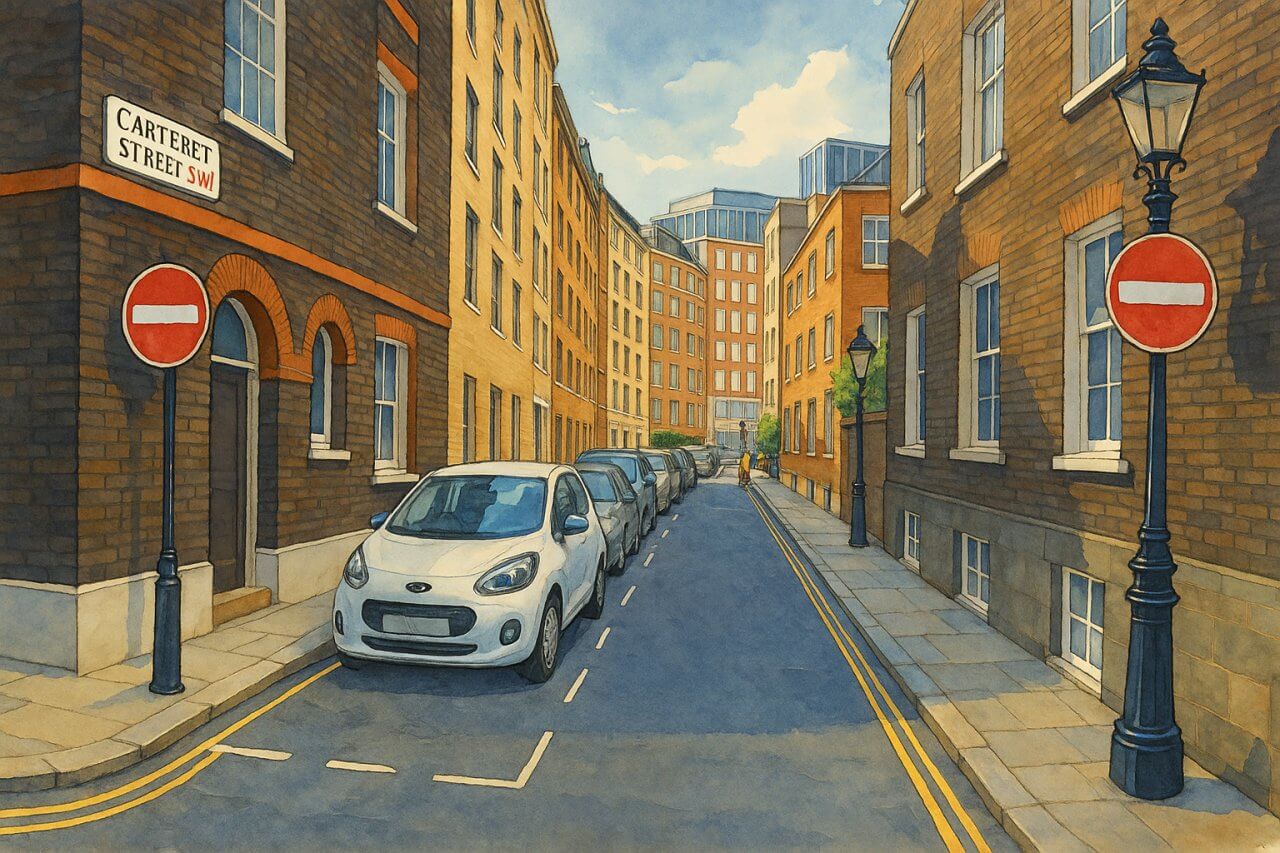
Carteret Street, London
Carteret Street, Westminster: Linking History and Government in Central London
Carteret Street is located in the heart of the City of Westminster, just a short walk from some of the most iconic buildings in central London. It runs between Broadway and Tothill Street at its western end and leads to Queen Anne's Gate on the eastern side.Nestled within a historic and governmental enclave, Carteret Street sits close to notable thoroughfares such as Victoria Street and is just minutes from Parliament Square and St James's Park.
How Long is Carteret Street?
Carteret Street is relatively short, measuring just under 200 metres in length. Despite its modest size, it serves as an important connecting route between several major roads and points of interest.History and Origins of Carteret Street
The street dates back to the early 18th century, when the surrounding area was being developed as part of the western expansion of Westminster. Its proximity to St James's Park and Whitehall made it an attractive location for residences, particularly among government officials and aristocrats.In the 19th and 20th centuries, Carteret Street's character gradually shifted to a more institutional one, with buildings converted into offices and clubs serving those working in nearby government departments.
Map of Carteret Street, London
How Carteret Street Got Its Name
Carteret Street was named after Sir George Carteret (c.1610–1680), a Royalist statesman and naval officer who was Treasurer of the Navy and later Vice-Chamberlain of the Household under King Charles II.The naming likely occurred during the street’s early development in the 18th century, reflecting the tradition of commemorating influential royalists and public figures of the Restoration period in this area of Westminster.
Roads Connecting to Carteret Street
Carteret Street is a short connector but links three key roads:- Broadway to the west
- Tothill Street to the northwest
- Queen Anne’s Gate to the east

Painting of Carteret Street, London
Buildings and Sights Along Carteret Street
Though compact, Carteret Street is home to several notable buildings, including:- The Royal Commonwealth Society – housed in a historic building close to Queen Anne’s Gate
- Westminster Arms Pub – a popular stop for locals and tourists, located just off the street
- Government offices – several buildings along the street serve as administrative or consultancy offices supporting Whitehall departments
- St James’s Park
- Queen Anne’s Gate Gardens
- Westminster Abbey
The Character of Carteret Street
Carteret Street has a mixed-use character, primarily institutional and commercial. The street is frequented by civil servants, researchers, and professionals visiting nearby ministries.There is little residential presence, and the quiet nature of the street gives it a tucked-away, almost secretive feel despite being in one of London’s busiest districts.
Nearest London Underground Stations
The two closest Underground stations are:- St James’s Park (District and Circle lines)
- Westminster (Jubilee, District, and Circle lines)
Fun Fact About Carteret Street
A lesser-known fact: Carteret Street was once the location of the headquarters of the United Nations Association UK. This further underscores the area’s strong ties to diplomacy, governance, and international affairs.Quick Facts
- Location: City of Westminster, London
- Connects: Broadway, Tothill Street, Queen Anne’s Gate
- Length: Approx. 200 metres
- Character: Commercial / Institutional
- Nearby Stations: St James’s Park (District, Circle), Westminster (Jubilee, District, Circle)
- Historical Figure: Named after Sir George Carteret (1610–1680)
- Nearby Sights: St James’s Park, Westminster Abbey, Queen Anne’s Gate
- Fun Fact: Once home to the United Nations Association UK